
2018 Note: These are a few years old now, not the latest and greatest, but still get a few of the basic points across.
Plus, they bring internet traffic.
Please enquire about newer material.
Two five-minute pitches, including comments by KGE Founder Bryan Kelly.
Here are the accompanying investor posts, The Flying Car and Too Cheap To Meter.
The Flying Car
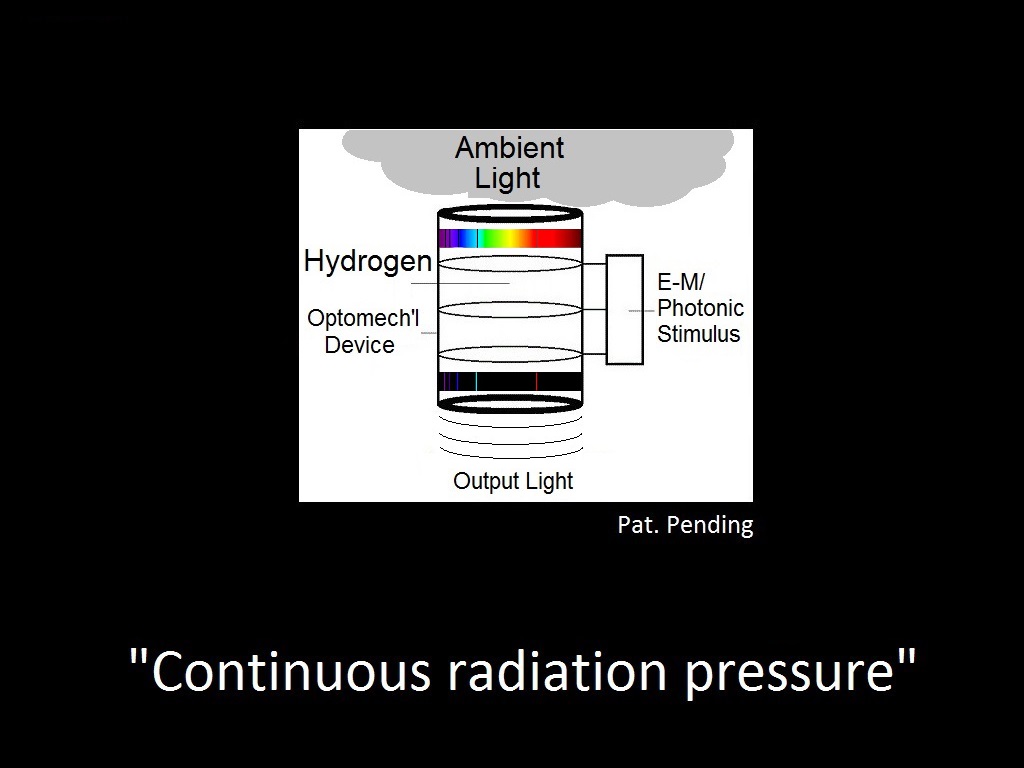
This is "continuous radiation pressure propulsion", also known as "gravity transparency".
What this does is: alleviate the effect of gravity in perhaps the best way possible in nature.
We do this by capturing and manipulating ambient light in an optomechanical device containing hydrogen.
Using electromagnetic (E-M) and photonic forces, we cause continuous loss of mass and radiation pressure.
We are effectively pulling light through mass at rates approaching the speed of light.
Therefore, we can "move" mass at that same rate, with ourselves attached to it.
The chemical and physical reactions are described in detail within the confidential webpage and patent documents.
And, we can arrange to meet later, to discuss all that.
The inherent properties of nature make this the best way to go.
So ultimately, we will be doing this.
We might as well get started now.
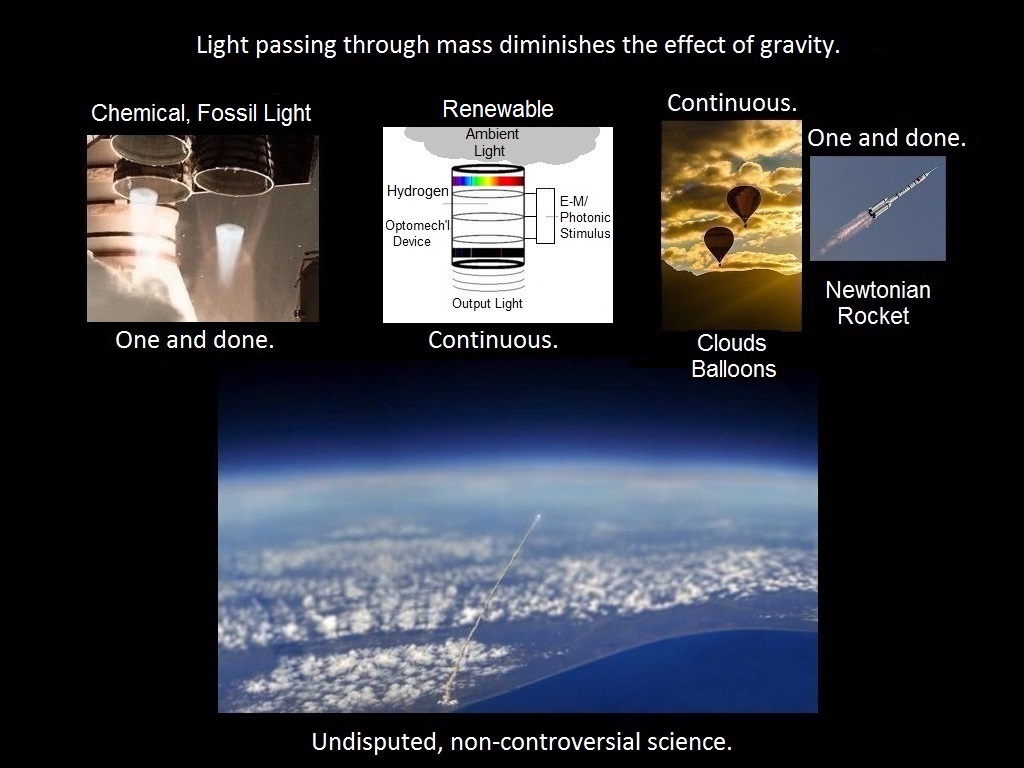
There are no black box surprises here, no anti-neutrinos or God particles to be named later.
All we are doing is using science and engineering to mimic and enhance nature, with existing materials, forces and technologies.
Ask yourselves...
How is it that the smoking water we call a cloud can defy gravity, but we can not?
Why isn't it down in the (area body of water)?
And what's with that gravity-defying plastic we call a balloon?
We can control this process, and enhance it.
And I am here to show you how.
Quite simply, the answer is continuous radiation pressure.
(Read from the slide.)
And next, we're going to try to simplify the entire concept on one slide, "antigravity from hydrogen".
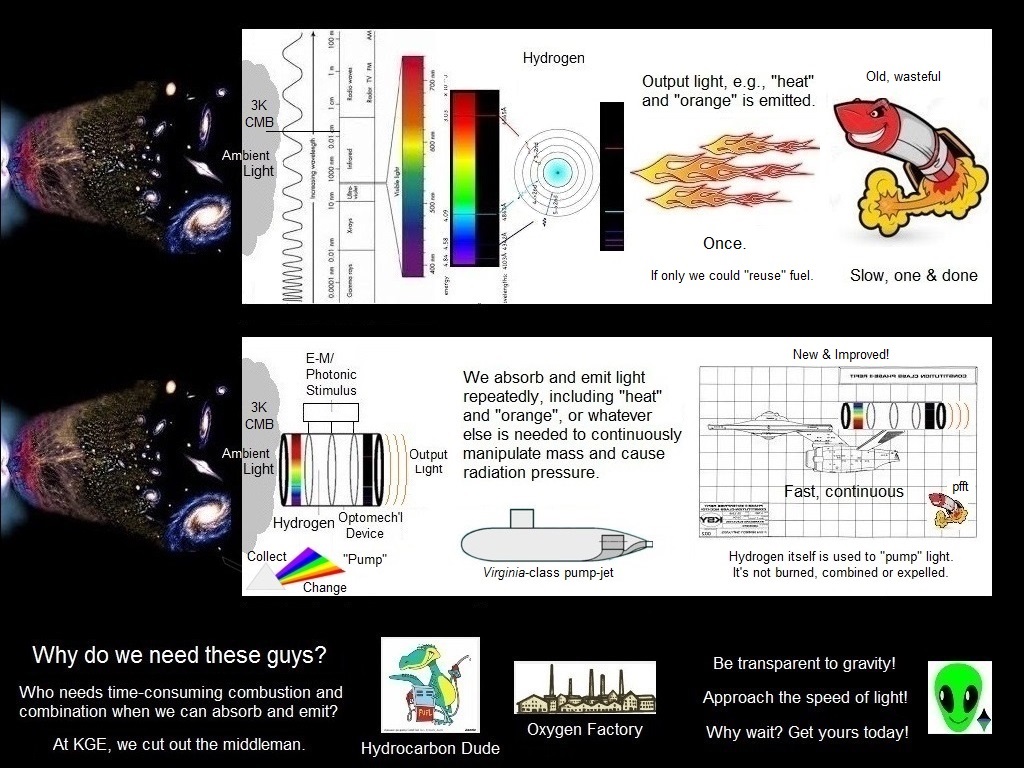
Now, to the corniest combination of rocket science, cheesy marketing and an advanced physics sales pitch slide perhaps ever.
What is the simplest, most efficient way to move matter?
You attach it to hydrogen, then pass light through the hydrogen, believe it or not.
So why not do it that way?
Once you wrap your mind around it, you'll wonder why this hasn't been obvious.
You'll see that combustion and combination are cumbersome extra steps -- what we really want is the light passing through the hydrogen.
I'm looking right at you, rocket scientists.
Isn't "thrust" caused by what the patent office sometimes likes to call "output light"?
Sure, it'll require a reframing and intuitive leap for some, others will perform endless jiggling and re-calculating with the existing conventional wisdom.
It's hard to teach a Newtonian dog Einstein's new tricks. I mix the concepts myself, constantly.
But you do want to be a multi-planet species, don't you?
This is how it's done.
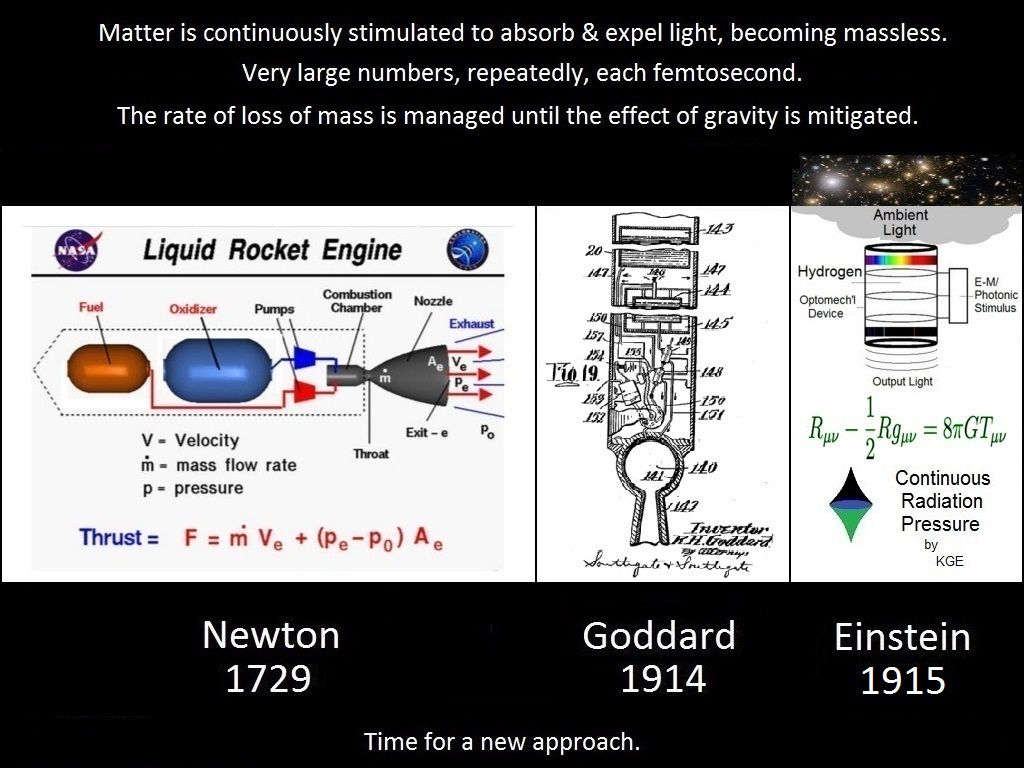
So why is this better?
Because the best science has been applied to nature's simplest solution to our problem.
It's just a simpler, clearer view of "thrust".
You could call it reverse-engineering with the help of relativity theory.
We mimic, enhance and repeat.
And we come up with ...
(Read from the slide.)
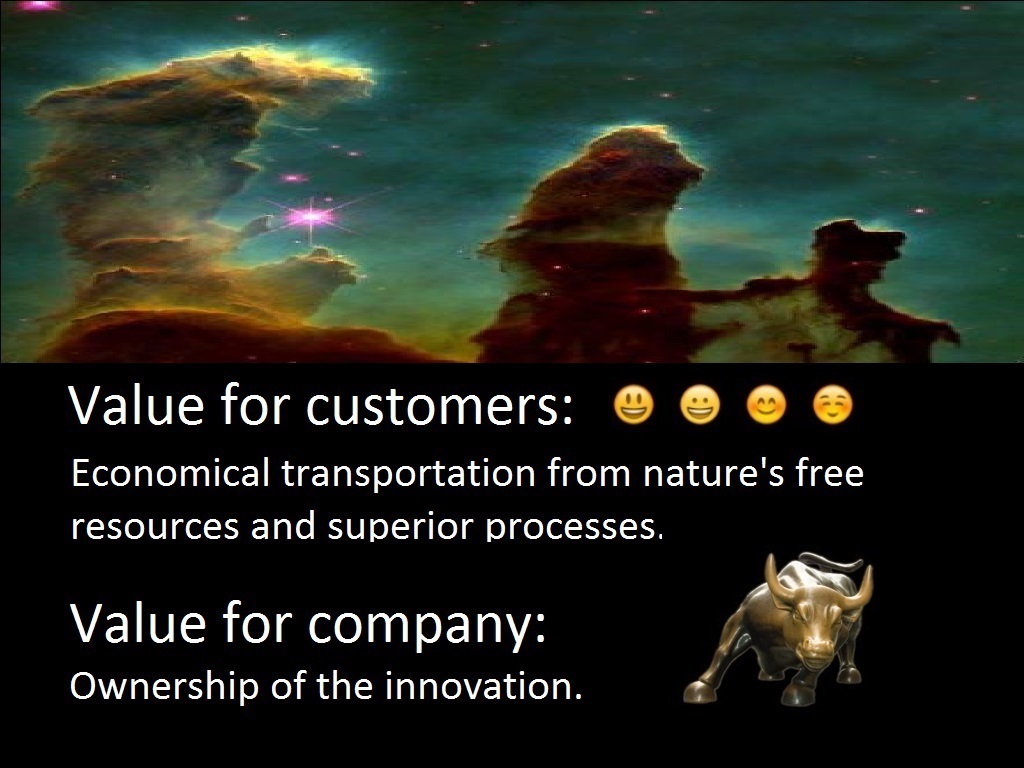
And what is the "value" of all this?
Value comes from scarcity, when demand for some benefit is greater than the supply.
The benefit here is cheap transportation.
That's what we're going to give them.
We'll take it from nature, pass it on, and charge for our trouble.
And our trouble costs a lot less than the other guys'.
The innovation is of value because it uses nature's superior processes.
It's a bit awkward saying this, but "The Flying Car" starts right here.
Common sense tells us something like this is going to happen someday anyway, and I think it has.
I am asking you to help me act on it.
Thank you.
Read the detailed technical description at Breakthrough Propulsion Physics.
Want more? Have a look the older blog post, "The Flying Car"? "Antigravity"? Ridiculous!
And more images can be seen at Anti Gravity Technology.
Too Cheap To Meter
2018 Note: These are a few years old now, not the latest and greatest, but still get a few of the basic points across.
Plus, they bring internet traffic.
Please enquire about newer material.
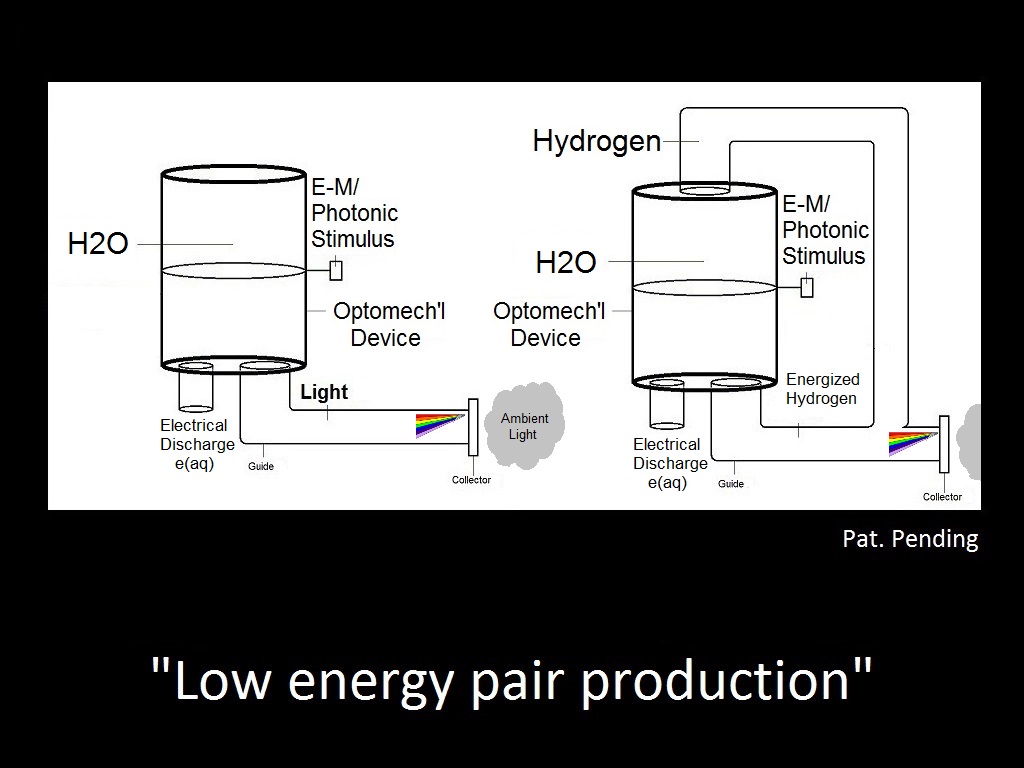
This is "low energy pair production", also known as "photon conversion" or the "excess aqueous electron", e(aq).
What this does is: generate electricity in perhaps the best way possible in nature.
We do this by capturing and manipulating ambient light in an optomechanical device containing water and hydrogen.
Using electromagnetic (E-M) and photonic forces, we cause creation of the excess aqueous electron, e(aq), or low energy pair production.
The e(aq) is also variously referred to as the hydrated electron and the solvated electron.
There are two ways to deliver light, directly or with energized hydrogen, which can also be used as storage.
The chemical and physical reactions are described in detail within the confidential webpage and patent documents.
And, we can arrange to meet later, to discuss all that.
The inherent properties of nature make this the best way to go.
So ultimately, we will be doing this.
We might as well get started now.
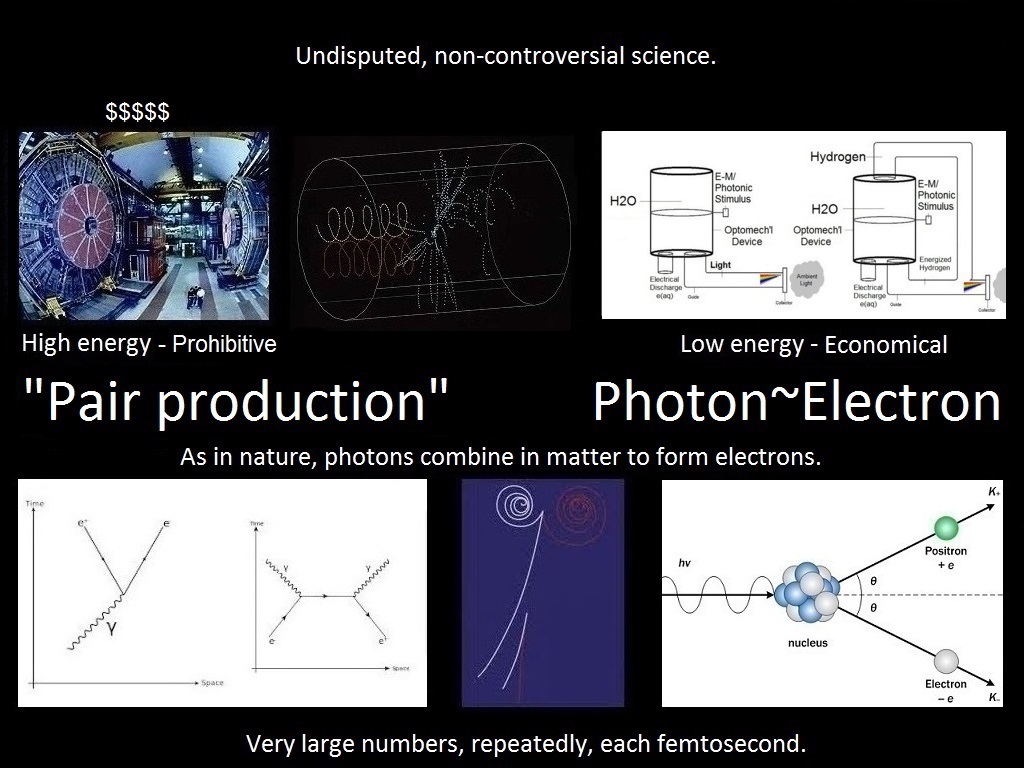
There are no black box surprises here, no anti-neutrinos or God particles to be named later.
All we are doing is using science and engineering to mimic and enhance nature, with existing materials, forces and technologies.
Ask yourselves...
How is it that electricity can literally, out of the blue, blast out of the sky?
Surely that's well-understood by now, right?
Can a plant make an electron without a particle accelerator?
And why are random low-energy electrons interfering with DNA?
We can control this process, and enhance it.
And I am here to show you how.
Quite simply, the answer is the excess aqueous electron, or the e(aq).
(Read from the slide.)
And next, we're going to try to simplify the entire concept to one slide, "electricity from water".
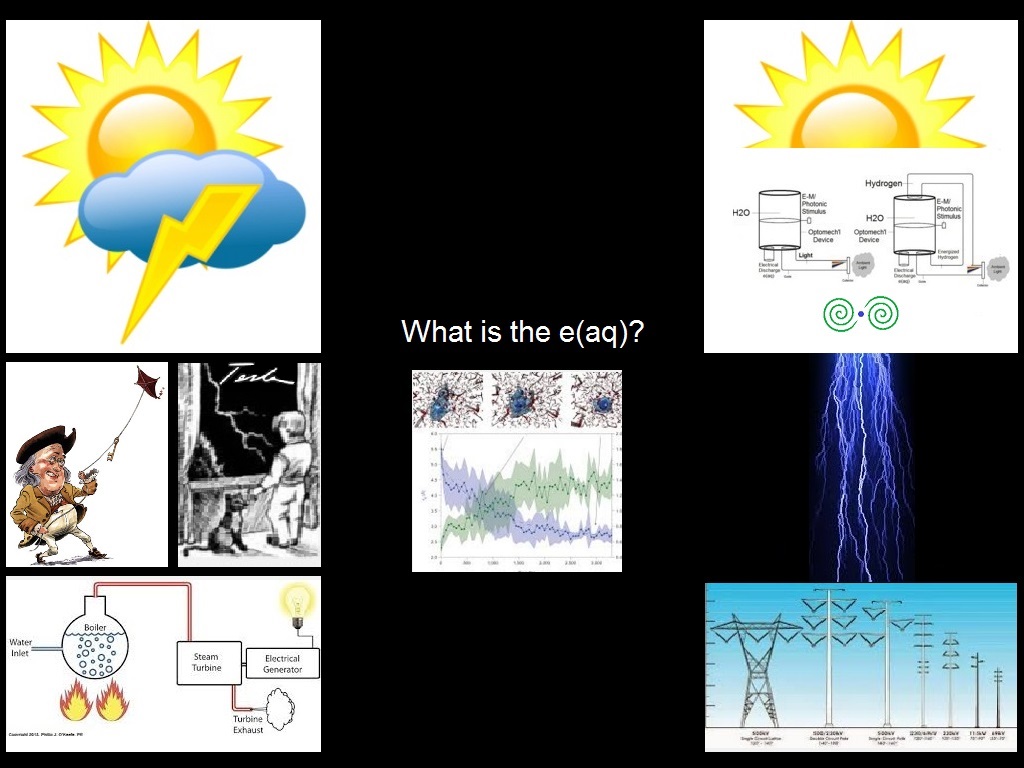
Now, to the corniest combination of water chemistry, cheesy marketing and an advanced physics sales pitch slide perhaps ever.
What is the simplest, most efficient way to generate electrons?
You combine light in water, believe it or not. It's called the "excess" aqueous electron, e(aq).
So why not do it that way?
Once you wrap your mind around it, you'll wonder why this hasn't been obvious.
What we want is an electron, so why not make one?
You'll see that pushing and pulling electrons involves cumbersome extra steps -- what we want is an electron here and now, why push one for fifty miles?
I'm looking right at you, electric utilities.
Isn't an electron simply two merged photons?
Why haven't we tried to reverse engineer lightning? Isn't it simple common sense?
Sure, it'll require a reframing and intuitive leap for some, others will perform endless jiggling and re-calculating with the existing conventional wisdom.
It's hard to teach Maxwell's dog Einstein's new tricks. I mix the concepts myself, constantly.
But you do want free flowing electricity for all, don't you?
This is the way it is done.
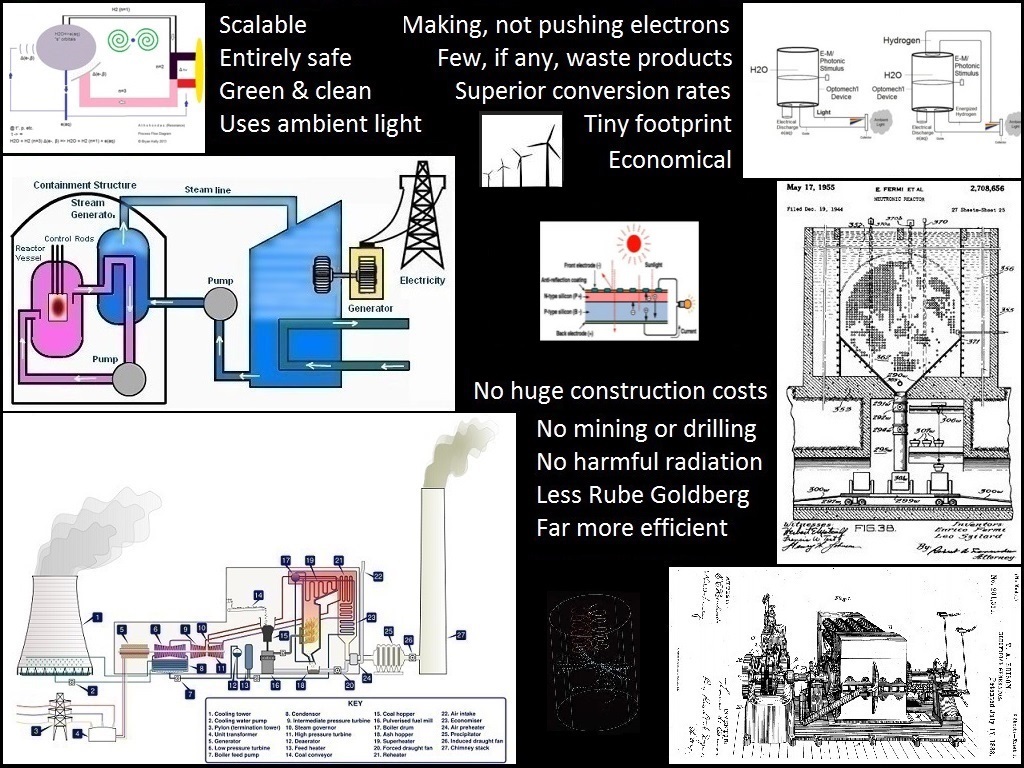
So why is this better?
Because the best science has been applied to nature's simplest solution to our problem.
It's just a simpler, cleaner method for obtaining, storing and moving electrons.
You could call it reverse-engineering with the help of quantum theory.
We mimic, enhance and repeat.
And we come up with ...
(Read from the slide.)
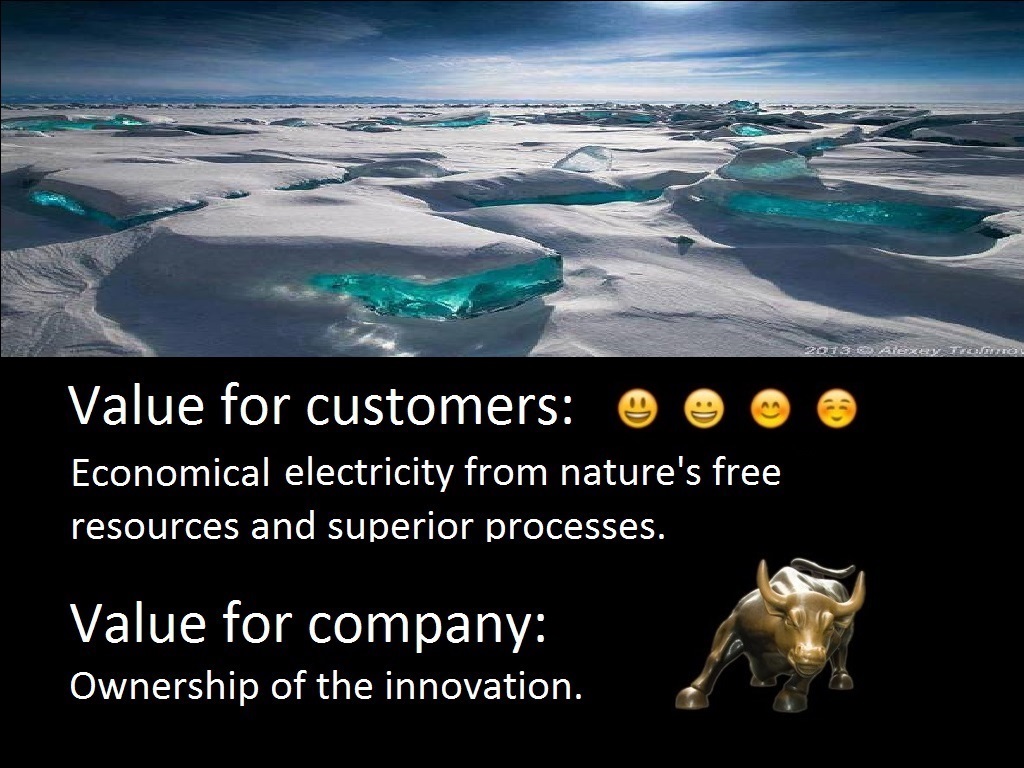
And what is the "value" of all this?
Value comes from scarcity, when demand for some benefit is greater than the supply.
The benefit here is cheap electricity.
That's what we're going to give them.
We'll take it from nature, pass it on, and charge for our trouble.
And our trouble costs a lot less than the other guys'.
The innovation is of value because it uses nature's superior processes.
It's a bit awkward saying this, but "Too Cheap To Meter" starts right here.
Common sense tells us something like this is going to happen someday anyway, and I think it has.
I am asking you to help me act on it.
Thank you.
Read the detailed technical description at Artificial Lightning.
Want more? Have a look the older blog post, "Too Cheap To Meter"? We've heard that one before.
And more images can be seen at Lightning Electricity Generation.
